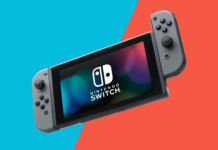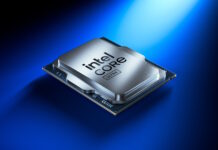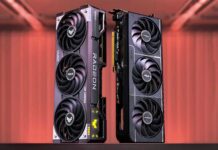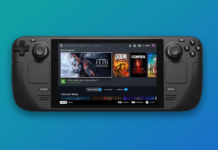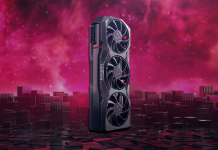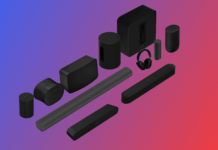Vi har tagit oss en pratstund med Paul Watkins hos minnestillverkaren Corsair. Corsairs produkter är nog ingen nyhet för våra läsare, men hur Corsair själva ser på sin verksamhet och framtiden är något vi undrade över.
Bland våra reguljära besökare är det nog inte många som rynkar på näsan när man nämner företaget Corsair. Den respekterade minnestillverkaren som varit aktiv på PC-marknaden i ett drygt decennium är fortfarande en av de ledande aktörerna på minnesmarknaden. Man har fortsatt med sin breda satsning på minnesmoduler men har på senare år även börjat titta på andra produktkategorier.
Vi beslöt oss att ta en pratstund med Corsair för att försöka få lite mer kött på benen om inte bara deras produkter utan om själva företaget Corsair.
Vi fick oss en pratstund med Paul Watkins på företaget, säljansvarig för den europeiska marknaden, och ställde frågor om allt från företagets historia till deras syn på rambaserade hårddiskar.
Mycket fokus läggs självklart på Corsairs huvudsatsning, minnesmarknaden, men vi har även fått med frågor om andra ämnen i denna intervju.
Innan vi går vidare med intervjun vill vi påpeka att den presenteras i sitt originalutförande som vi utförde den, med andra ord på engelska. Detta för att inte riskera att förlora något budskap i översättningen. Men låt oss nu gå vidare med intervjun.
[NordicHardware]: Hi Paul and thank you for giving us the opportunity to ask some questions about Corsair and your products. We wonder if you could start with giving us a simple presentation of Corsair and yourself? We have a few specifically interesting points in this regard.
[Paul Watkins]:So, about me…briefly, I have an engineering background…I enterered the DRAM market in 1992, when I joined Micron. Subsequently, I was European Marketing Manager in IBM ‘s Microelectronics Division for some years, before joining with Corsair. I have been with Corsair since January 2001. I am Corsair’s Director of Sales for Europe. I have responsibility for Corsair’s European Sales and Marketing operations.
Paul Watkins (Under en dyksemester på Sardinierna)
· Company history?
[Paul Watkins]: Corsair was founded 11 years ago, to design and manufacture high speed cache memory modules for companies like Intel, Dell and Micron. (When Level 2 cache was on the a module, not on the CPU – Who remembers that ?) We’ve been working to stay at the forefront of high speed module design ever since then.· Number of manufactured memory modules in Corsairs factory’s (monthly). For OEM and retail sales?
[Paul Watkins]: Since we are focussed so heavily on the enthusiast and gaming market, the bulk of what we make is for the retail market. On-line stores like Komplett and Datorbutiken make up a good share of our business in Scandinavia· How are Corsair’s sales figures divided amongst your different products? ( DRAM memory, USB memory, water cooling and so forth)
[Paul Watkins]: Corsair has been in the DRAM industry for a long time. Memory modules still make up the biggest share of our market. We entered into watercooling last year, in order to get educated in the current and future needs of our customer base. Our current offering ( The ‘ COOL ‘ www.corsairmemory.com/corsair/COOL_water.html ) is our third water cooling product. We are trying to make top-class watercooling kit is available from a mainstream company (us), so enthusiasts can be sure of good service and good availability. We are trying to bring water out of the shadows. I said ‘future’ needs, because surpisingly few people are actively using watercooling right now. We expect water to play a huge part in the enthusiast market in a few years. We want to evolve with the market, so that we can bring the same benefits to that market as we did to the memory market, when XMS overclocking memory launched, some years back – I mean reliability, performance, quality, service.
[NordicHardware]: Mostly when you talk about high performance memory modules the discussion is about what memory chips are the best. What memory chips does Corsair use in its product lines?
[Paul Watkins]: We use many several DRAM chips across our product range. For our fastest modules, we test every chip on the market, to find the fastest. We then ensure that it can be made in enough volume to satisfy our customers needs (there’s no point having the fastest module in the world, if real people can get hold of it). For example, our 3200XL modules (the ones with 2-2-2-5 timings) use the special die the Samsung produced for Corsair – their TCCD die. For other speed grades, we balance the needs for price, performance – making sure it always meets the guaranteed specification and then see what headroom we can find.And what are the differences between memory chips that make them perform so differently?
[Paul Watkins]: Most memory chips are designed and manufactured with the primary goal of making companies like Dell happy. This means that they should be cheap and meet the spec that Dell is using at the time. In general, the chip makers try to tune their production to turn out as many just-good-enough chips as possible. (The Dell-likes won’t pay more for a chip that goes faster than their spec). So most chips run just-fast-enough. Sometimes, however, a new die rev will have been designed with a different customer in mind; perhaps in telecoms, or perhaps Corsair, as was the case for Samsung’s TCCD. We can find any ‘hidden speed’ and harness it. Occasionally, a DRAM chip will be designed to be fast enough that it can be tweaked, at a later date, to meet future speed grades. So, even though the chip maker only tests it to, say, PC3200, we can test it again to find parts that will run faster.
[NordicHardware]: If we look beyond the memory chips we have the PCB (Printed Circuit Board) or the module it self. How important is a high quality PCB for enthusiast memory that often is stressed to their limits?
[Paul Watkins]: It is very important for reliability and stability (as well as performance). The PCB is the foundation upon which the module reliability, compatibility and stability are based. A high quality PCB will contain sufficient power and ground planes to adequately perform at high speeds. It will have matched trace lengths ensuring reliable signal timings (the connection wires that run across the PCB have to be carefully measured and controlled, to avoid deterioration of the signal on the module). It will also have thick layers of gold on the pins, to ensure good connection and signal integrity in the socket (rather than having a thin layer of gold ‘sputtered’ on – a kind of electrical spraying technique). Corsair prides itself on the quality of it’s PCB design and manufacture – this is what our reputation for reliability is built on.It’s also possible to sometimes get a PCB design that gives significant performance boosts, compared to the norm. There is one such case right now.
[NordicHardware]: Corsair has a life time warranty policy for their memory line-up. But exactly how does this warranty work. Is it the life of the consumer or is it the life of the memory module, does the warranty expire when the module goes out of production or is the consumer covered for their entire life?
[Paul Watkins]: It works like this; if one of our modules ceases to function properly, in the application it was designed for (e.g. in a PC), it will be replaced with the same module or, if that module is no longer made, with as close a match as possible. It’s very simple, there are no hidden catches.
[NordicHardware]: Corsair has always focused on the memory market that in many eyes is a pretty “boring” market without many unique products. With the launch of for example the Pro and now recently the Xpert series Corsair has created truly unique memory modules, by integrating diagnostic tools on the modules themselves.
Is this a way to give the memory market a greater consumer appeal or is it strictly because Corsair felt that the added features was needed amongst their users?
As for the PRO and the Xpert, we are trying to achieve two things; we are making the memory more feature-rich (as the marketing guys say). For the enthusiast, these features can be very useful. You can’t depent upon your BIOS to tell you the bus frequency or the memory voltage. You can get some variable results. Likewise, the thermistor in your CPU won’t tell you the temperature of your RAM . The Xpert (and to a lesser extent, the PRO) measure these vital statistics (!) directly from the module. They are the real deal. Having software to help you do that makes it easier for enthusiasts to tinker under the hood. The second thing we are doing is to give the memory some ‘bling’. If you have a windowed case, you want to see some action – Don’t you ?
[NordicHardware]: Coming back to the Pro and Xpert series of memory the later has really expanded the diagnostic abilities of Corsairs modules that was first introduced in the Pro series. We’ll soon publish or own review of the Xpert series but for know we would like to know what Corsair had in mind when launching the Xpert series and what consumers it’s targeted to?
[Paul Watkins]: I have somewhat answered this one in question 4. But to recap; the Xpert is;1. for performance tweakers who want to know the facts, not just get unreliable clues, and 2. for PC enthusiasts who want to give their rig a personal touch. Go take a look at the specs www.corsairmemory.com/corsair/xms_xpert.html
[NordicHardware]: The DDR 2 market expanded quite a lot last year even though only Intel has embraced the technology on the PC market. What does the future hold for DDR 2 during 2005 and does Corsair have any specific plans in this regard?
[Paul Watkins]: Oh yes ! DDR 2 is still more expensive than DDR and it will stay that way, probably for the rest of the year. However, there is plenty of headroom in DDR 2 performance – DDR 800 next. As new chipsets are developed to take advantage of it, Corsair will be there to give you the memory to make it fly. We did this with our PC5400 (we had DDR 2 ready 7 months before chipsets were available to run it!) and we have other DDR 2 products in the pipeline.
[NordicHardware]: Before we leave memory subject we are also wondering what Corsair feels about DRAM drives. More exactly harddrives without mechanical parts that uses memory chips for storage. Have Corsair as a memory maker discussed the possibility to produce such products as and do you think there is a market for this kind of product in the near future?
[Paul Watkins]: It’s technically feasible now, of course. However, with 512MB of memory costing SEK 800, it would cost SEK 200,000 for a 120GB DRAM -hard-drive. Compare this with SEK 720 for a 120GB IDE drive and something will have to change significantly before it becomes and option. The other problem is volatility. If you remove the power, DRAM forgets everything. So you’d need a battery backup, to ensure data stays put. If the battery goes flat, while you’re away on your holidays, you lose all your programmes, all your photos, all your music. Not good.Flash is already taking some of this job, for portable hard drives. Excuse the advert, but Corsair has a 2GB USB drive. That’s already a lot of storage and it never forgets. ( but since I mentioned it.. www.corsairmemory.com/corsair/flash_memory.html )
[NordicHardware]: The last couple of months we have also reported about Corsairs new flash based memory products. The USB memory stick, Flash Voyager, for example is one of these new products. Why did Corsair decided to enter the flash memory market? And why did it take so long?
[Paul Watkins]: We entered the flash market because we believe that we can produce products that are either more interesting (features, look and feel – I mean the Voyager USB drive) or because we can bring a performance benefit. We are diping our toe in the water now. We plan to have new fast and interesting products as our experience develops.[NordicHardware]: Thank you Paul for taking time to answer our and our readers questions!
[Paul Watkins]: My pleasure !
Vi hoppas att ni, våra läsare, fått intressant information om Corsair som företag och deras synsätt på marknaden. Personligen ser vi det som extra intressant att Corsair börjat känna sig för på andra marknadsdelar än just minnesmarknaden. Men det är av förklarliga skäl minnesmarknaden som ligger företaget varmast om hjärtat.
Det finns knappast någon vits att ändra på ett vinnande koncept, men trots detta verkar Corsair jobba hårt med att utveckla sig och inte hamna efter i den lavinartade utveckling som vi sett på PC-marknaden de senaste åren.
Några av er kanske undrar varför era frågor inte kom med i vår intervju och det är på grund av att vi var tvugna att korta ner intervjun i mån om tid. Resultatet blev tio frågor med detaljerade svar från Paul Watskin vilket vi faktiskt tycker är bättre än 15-20 frågor med mindre detaljerade svar.
Ni kommer få se mycket mer av Corsair och deras produkter på NordicHardware i framtiden.. Tyvärr var våra försök att pressa Paul på information om kommande produkter fruktlös, vilket inte var någon överraskning men vi kände oss ändå skyldiga att göra ett försök.
Håll utkik, för inom kort dyker det upp mer material om Corsair här på NordicHardware.


